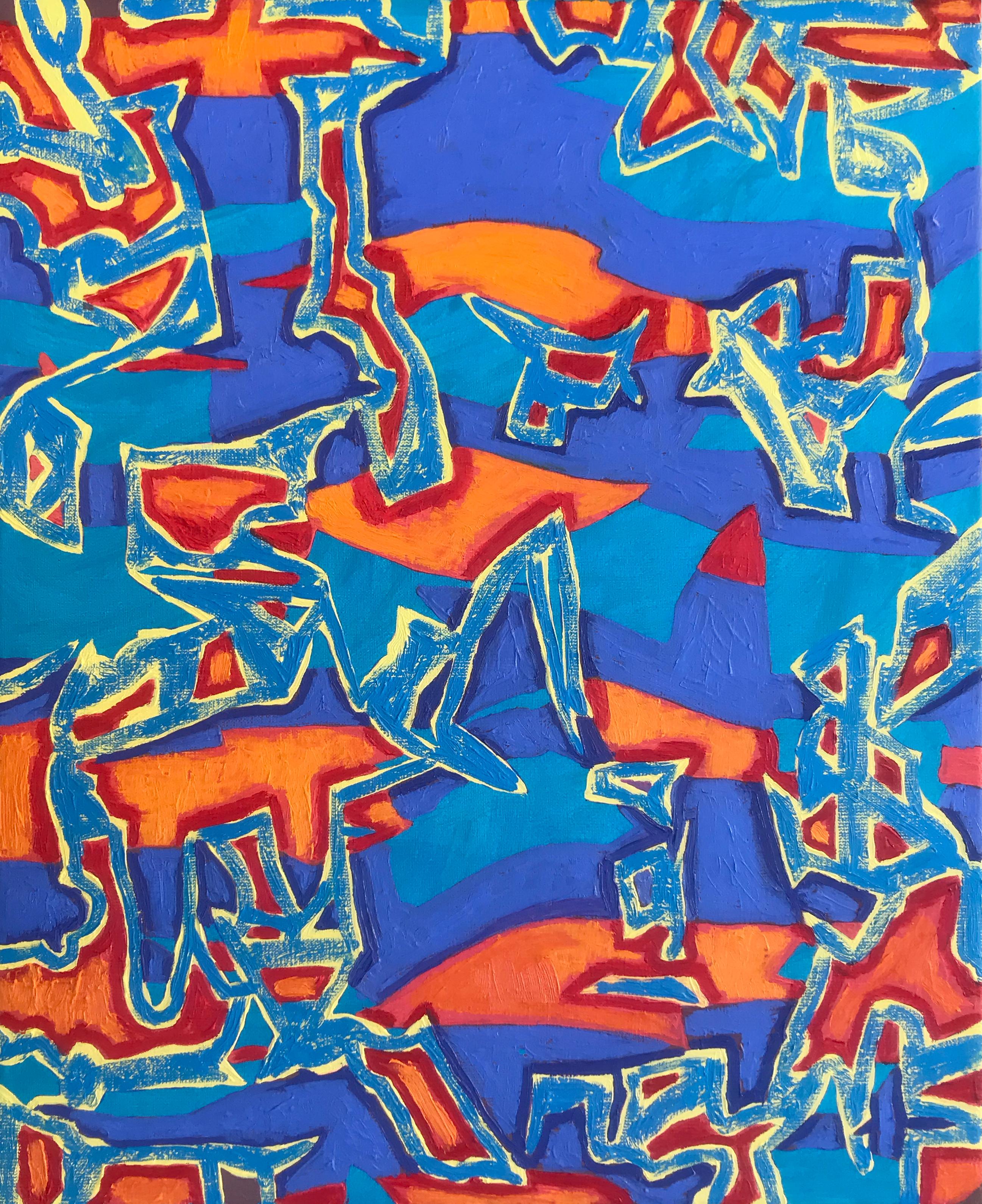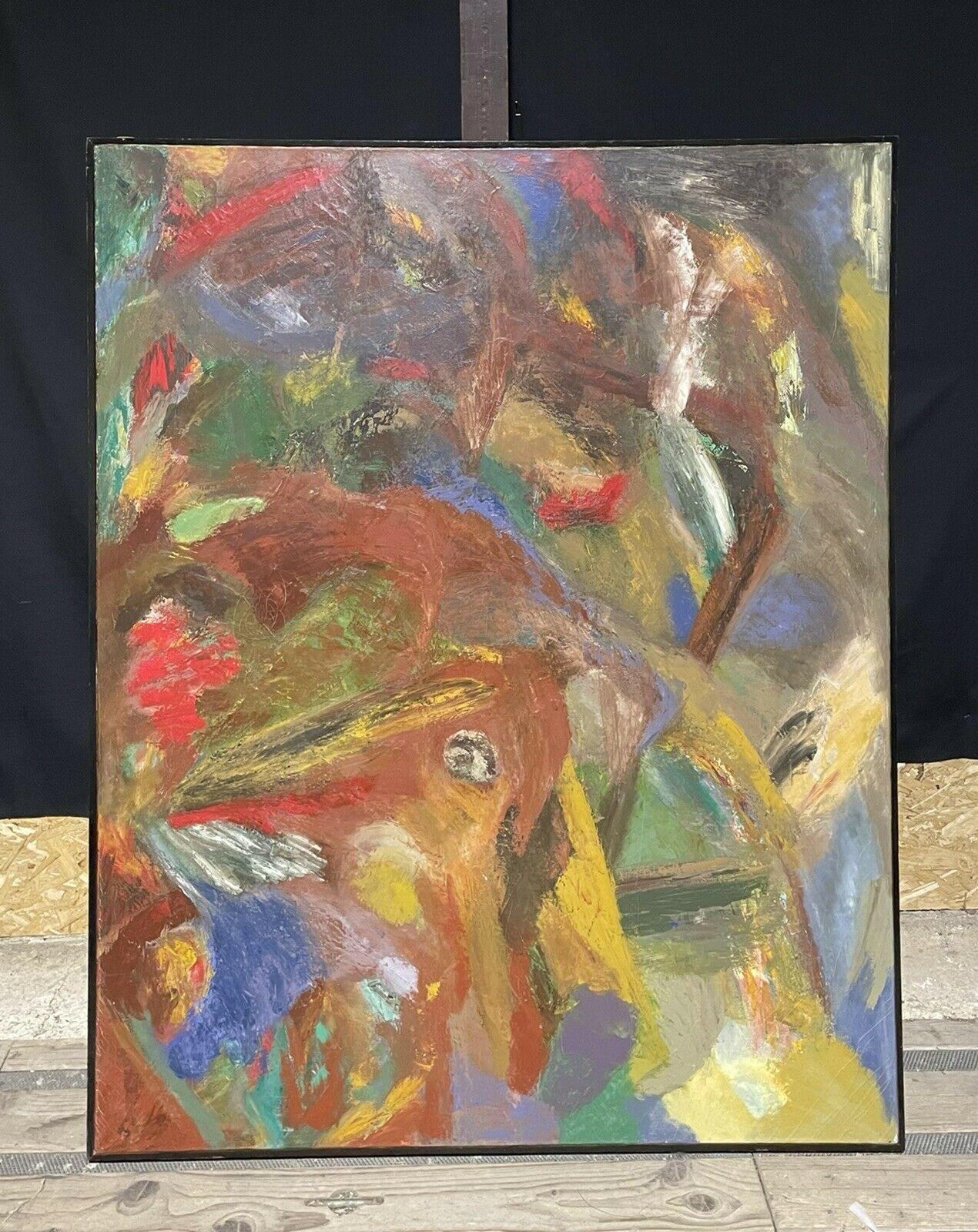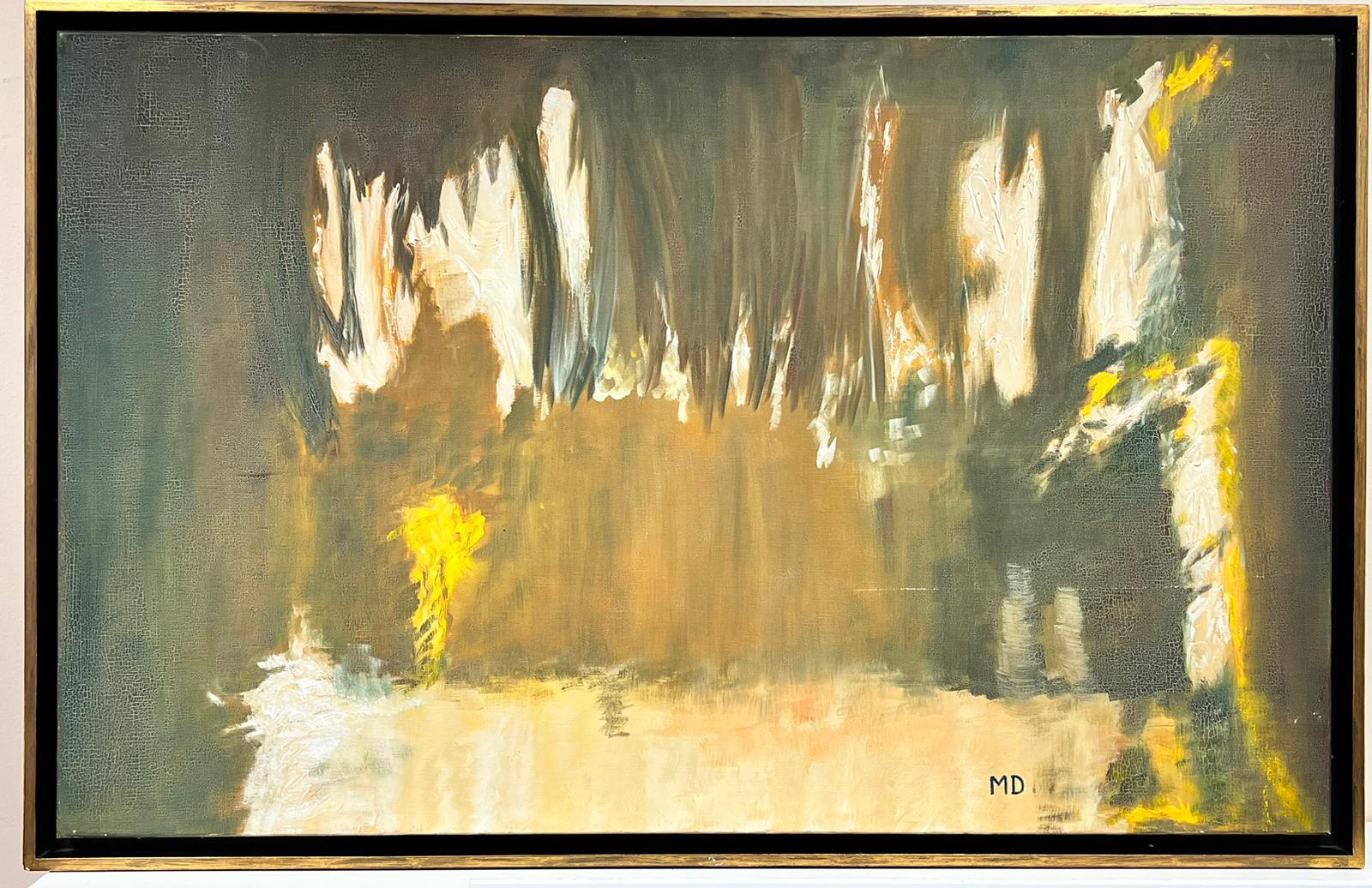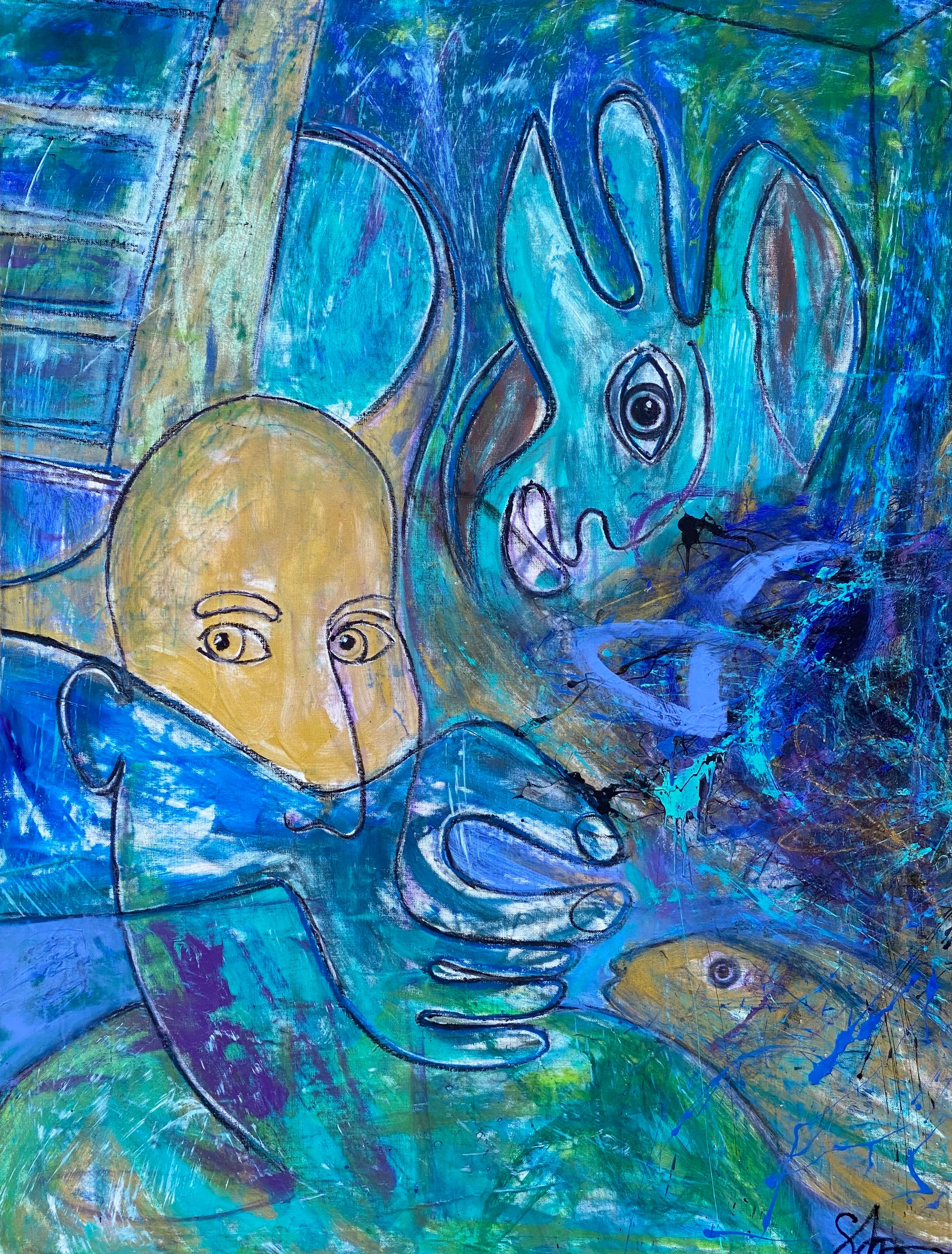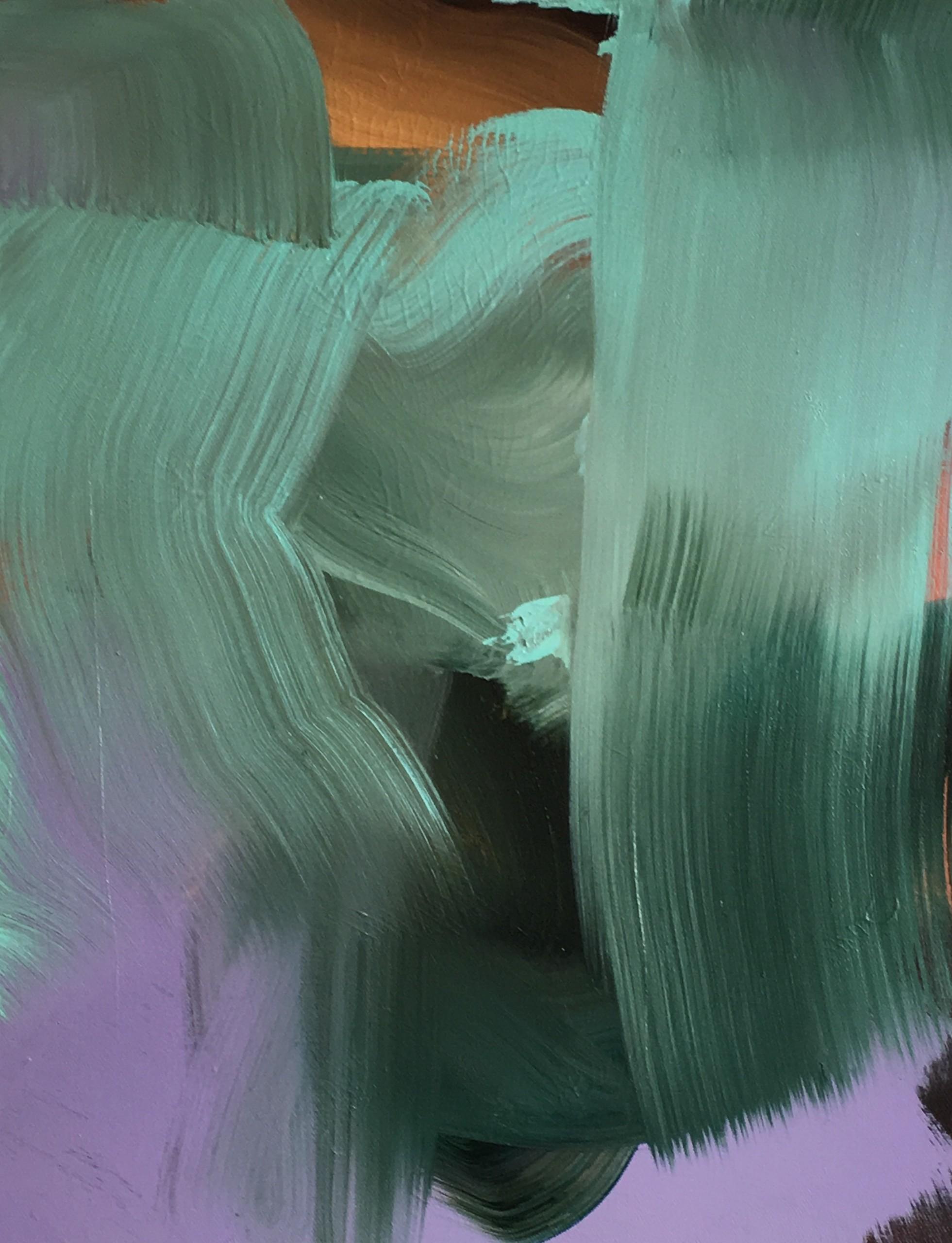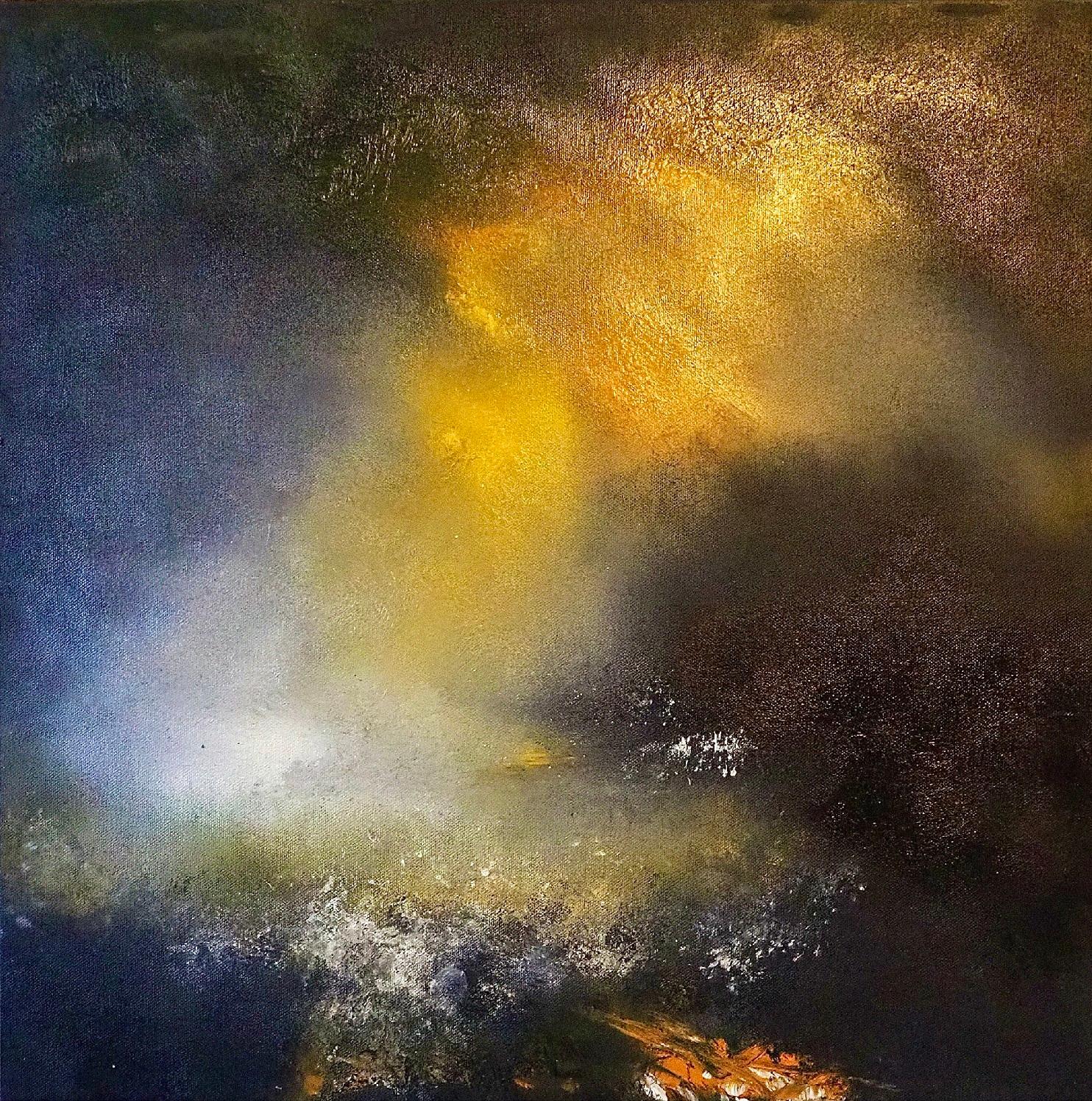Items Similar to "Untitled"
Want more images or videos?
Request additional images or videos from the seller
1 of 9
Clayton Mitropoulos"Untitled"20005
20005
About the Item
This abstract oil on canvas painting was done in 2005 and was exhibited at RVS Fine Art the same year. In good condition and housed in a contemporary gold gilt frame. Overall size 25.25 x 31.25 inches.
The artist has also exhibited his work at the Parrish Art Museum in 1998 and 1999.
- Creator:Clayton Mitropoulos (1953, American)
- Creation Year:20005
- Dimensions:Height: 24 in (60.96 cm)Width: 30 in (76.2 cm)Depth: 1 in (2.54 cm)
- Medium:
- Movement & Style:
- Period:
- Condition:
- Gallery Location:Southampton, NY
- Reference Number:1stDibs: LU141422662
About the Seller
5.0
Platinum Seller
These expertly vetted sellers are 1stDibs' most experienced sellers and are rated highest by our customers.
Established in 1977
1stDibs seller since 2013
469 sales on 1stDibs
Typical response time: 1 hour
- ShippingRetrieving quote...Ships From: Southampton, NY
- Return PolicyA return for this item may be initiated within 7 days of delivery.
More From This SellerView All
- “Untitled”By John LittleLocated in Southampton, NYOriginal oil on canvas painting by the well known abstract expressionist artist, John Little. Signed lower right. Signed and dated 1965 on top stretcher bar verso. Betty Parsons Ga...Category
1960s Abstract Expressionist Abstract Paintings
MaterialsCanvas, Oil
- “Lightride”By Syd SolomonLocated in Southampton, NYHere for your consideration is a great example of the artwork of the well known American artist, Syd Solomon. Signed top left. Titled and dated verso 1978. The painting is oil and acrylic paint on mounted synthetic canvas. Condition is excellent. Overall framed measurements are 44.75 by 24.5 inches. Provenance: A Sarasota, Florida collector. SYD SOLOMON BIOGRAPHY American 1917-2004 Written by Dr. Lisa Peters/Berry Campbell Gallery “Here, in simple English, is what Syd Solomon does: He meditates. He connects his hand and paintbrush to the deeper, quieter, more mysterious parts of his mind- and he paints pictures of what he sees and feels down there.” --Kurt Vonnegut Jr. from Palm Sunday, 1981 Syd Solomon was born near Uniontown, Pennsylvania, in 1917. He began painting in high school in Wilkes-Barre, where he was also a star football player. After high school, he worked in advertising and took classes at the Art Institute of Chicago. Before the attack on Pearl Harbor, he joined the war effort and was assigned to the First Camouflage Battalion, the 924th Engineer Aviation Regiment of the US Army. He used his artistic skills to create camouflage instruction manuals utilized throughout the Army. He married Ann Francine Cohen in late 1941. Soon thereafter, in early 1942, the couple moved to Fort Ord in California where he was sent to camouflage the coast to protect it from possible aerial bombings. Sent overseas in 1943, Solomon did aerial reconnaissance over Holland. Solomon was sent to Normandy early in the invasion where his camouflage designs provided protective concealment for the transport of supplies for men who had broken through the enemy line. Solomon was considered one of the best camoufleurs in the Army, receiving among other commendations, five bronze stars. Solomon often remarked that his camouflage experience during World War II influenced his ideas about abstract art. At the end of the War, he attended the École des Beaux-Arts in Paris. Because Solomon suffered frostbite during the Battle of the Bulge, he could not live in cold climates, so he and Annie chose to settle in Sarasota, Florida, after the War. Sarasota was home to the John and Mable Ringling Museum of Art, and soon Solomon became friends with Arthur Everett “Chick” Austin, Jr., the museum’s first Director. In the late 1940s, Solomon experimented with new synthetic media, the precursors to acrylic paints provided to him by chemist Guy Pascal, who was developing them. Victor D’Amico, the first Director of Education for the Museum of Modern Art, recognized Solomon as the first artist to use acrylic paint. His early experimentation with this medium as well as other media put him at the forefront of technical innovations in his generation. He was also one of the first artists to use aerosol sprays and combined them with resists, an innovation influenced by his camouflage experience. Solomon’s work began to be acknowledged nationally in 1952. He was included in American Watercolors, Drawings and Prints at the Metropolitan Museum of Art, New York. From 1952–1962, Solomon’s work was discovered by the cognoscenti of the art world, including the Museum of Modern Art Curators, Dorothy C. Miller and Peter Selz, and the Whitney Museum of American Art’s Director, John I. H. Baur. He had his first solo show in New York at the Associated American Artists Gallery in 1955 with “Chick” Austin, Jr. writing the essay for the exhibition. In the summer of 1955, the Solomons visited East Hampton, New York, for the first time at the invitation of fellow artist David Budd...Category
1970s Abstract Expressionist Abstract Paintings
MaterialsCanvas, Oil, Acrylic, Board
- “Gulfside”By Syd SolomonLocated in Southampton, NYOriginal, oil paint and acrylic paint on canvas by the well known American artist, Syd Solomon. Signed bottom middle by the artist. Titled and dated verso 1983. Condition is excellent. Original gallery floating frame. Overall framed measurements are 38 by 42 inches. Provenance: A Sarasota, Florida collector. SYD SOLOMON BIOGRAPHY Written by Dr. Lisa Peters/Berry Campbell Gallery “Here, in simple English, is what Syd Solomon does: He meditates. He connects his hand and paintbrush to the deeper, quieter, more mysterious parts of his mind- and he paints pictures of what he sees and feels down there.” --Kurt Vonnegut Jr. from Palm Sunday, 1981 Syd Solomon was born near Uniontown, Pennsylvania, in 1917. He began painting in high school in Wilkes-Barre, where he was also a star football player. After high school, he worked in advertising and took classes at the Art Institute of Chicago. Before the attack on Pearl Harbor, he joined the war effort and was assigned to the First Camouflage Battalion, the 924th Engineer Aviation Regiment of the US Army. He used his artistic skills to create camouflage instruction manuals utilized throughout the Army. He married Ann Francine Cohen in late 1941. Soon thereafter, in early 1942, the couple moved to Fort Ord in California where he was sent to camouflage the coast to protect it from possible aerial bombings. Sent overseas in 1943, Solomon did aerial reconnaissance over Holland. Solomon was sent to Normandy early in the invasion where his camouflage designs provided protective concealment for the transport of supplies for men who had broken through the enemy line. Solomon was considered one of the best camoufleurs in the Army, receiving among other commendations, five bronze stars. Solomon often remarked that his camouflage experience during World War II influenced his ideas about abstract art. At the end of the War, he attended the École des Beaux-Arts in Paris. Because Solomon suffered frostbite during the Battle of the Bulge, he could not live in cold climates, so he and Annie chose to settle in Sarasota, Florida, after the War. Sarasota was home to the John and Mable Ringling Museum of Art, and soon Solomon became friends with Arthur Everett “Chick” Austin, Jr., the museum’s first Director. In the late 1940s, Solomon experimented with new synthetic media, the precursors to acrylic paints provided to him by chemist Guy Pascal, who was developing them. Victor D’Amico, the first Director of Education for the Museum of Modern Art, recognized Solomon as the first artist to use acrylic paint. His early experimentation with this medium as well as other media put him at the forefront of technical innovations in his generation. He was also one of the first artists to use aerosol sprays and combined them with resists, an innovation influenced by his camouflage experience. Solomon’s work began to be acknowledged nationally in 1952. He was included in American Watercolors, Drawings and Prints at the Metropolitan Museum of Art, New York. From 1952–1962, Solomon’s work was discovered by the cognoscenti of the art world, including the Museum of Modern Art Curators, Dorothy C. Miller and Peter Selz, and the Whitney Museum of American Art’s Director, John I. H. Baur. He had his first solo show in New York at the Associated American Artists Gallery in 1955 with “Chick” Austin, Jr. writing the essay for the exhibition. In the summer of 1955, the Solomons visited East Hampton, New York, for the first time at the invitation of fellow artist David Budd...Category
1980s Abstract Expressionist Abstract Paintings
MaterialsCanvas, Oil, Acrylic
- “Turning”By Syd SolomonLocated in Southampton, NYOriginal oil paint and acrylic paint on canvas by the well known American artist, Syd Solomon. Signed bottom middle. Titled and dated verso, 1977/1978. The location for the painting is Midnight Pass near where the artist once lived in Sarasota, Florida. Condition is excellent. The painting is housed in its original gallery frame with silver edge. Overall framed measurements are 51 by 38 inches. Provenance: A Sarasota, Florida collector. American, 1917-2004 SYD SOLOMON BIOGRAPHY: Written by Dr. Lisa Peters/Berry Campbell Gallery “Here, in simple English, is what Syd Solomon does: He meditates. He connects his hand and paintbrush to the deeper, quieter, more mysterious parts of his mind- and he paints pictures of what he sees and feels down there.” --Kurt Vonnegut Jr. from Palm Sunday, 1981 Syd Solomon was born near Uniontown, Pennsylvania, in 1917. He began painting in high school in Wilkes-Barre, where he was also a star football player. After high school, he worked in advertising and took classes at the Art Institute of Chicago. Before the attack on Pearl Harbor, he joined the war effort and was assigned to the First Camouflage Battalion, the 924th Engineer Aviation Regiment of the US Army. He used his artistic skills to create camouflage instruction manuals utilized throughout the Army. He married Ann Francine Cohen in late 1941. Soon thereafter, in early 1942, the couple moved to Fort Ord in California where he was sent to camouflage the coast to protect it from possible aerial bombings. Sent overseas in 1943, Solomon did aerial reconnaissance over Holland. Solomon was sent to Normandy early in the invasion where his camouflage designs provided protective concealment for the transport of supplies for men who had broken through the enemy line. Solomon was considered one of the best camoufleurs in the Army, receiving among other commendations, five bronze stars. Solomon often remarked that his camouflage experience during World War II influenced his ideas about abstract art. At the end of the War, he attended the École des Beaux-Arts in Paris. Because Solomon suffered frostbite during the Battle of the Bulge, he could not live in cold climates, so he and Annie chose to settle in Sarasota, Florida, after the War. Sarasota was home to the John and Mable Ringling Museum of Art, and soon Solomon became friends with Arthur Everett “Chick” Austin, Jr., the museum’s first Director. In the late 1940s, Solomon experimented with new synthetic media, the precursors to acrylic paints provided to him by chemist Guy Pascal, who was developing them. Victor D’Amico, the first Director of Education for the Museum of Modern Art, recognized Solomon as the first artist to use acrylic paint. His early experimentation with this medium as well as other media put him at the forefront of technical innovations in his generation. He was also one of the first artists to use aerosol sprays and combined them with resists, an innovation influenced by his camouflage experience. Solomon’s work began to be acknowledged nationally in 1952. He was included in American Watercolors, Drawings and Prints at the Metropolitan Museum of Art, New York. From 1952–1962, Solomon’s work was discovered by the cognoscenti of the art world, including the Museum of Modern Art Curators, Dorothy C. Miller and Peter Selz, and the Whitney Museum of American Art’s Director, John I. H. Baur. He had his first solo show in New York at the Associated American Artists Gallery in 1955 with “Chick” Austin, Jr. writing the essay for the exhibition. In the summer of 1955, the Solomons visited East Hampton, New York, for the first time at the invitation of fellow artist David Budd...Category
1970s Abstract Expressionist Abstract Paintings
MaterialsCanvas, Oil, Acrylic
- “Untitled”By John LittleLocated in Southampton, NYEarly, original oil on canvas painting by the well known American abstract expressionist artist, John Little. Signed and dated lower right, 1958. Signed and dated verso. Rose Fried...Category
1950s Abstract Expressionist Abstract Paintings
MaterialsCanvas, Oil
- “Abstract, 1954”By Irene ZevonLocated in Southampton, NYOil on canvas abstract painting by the American artist, Irene Zevon. Signed lower right and dated 1954. In very good condition. Not presently framed. Provenance: Estate of the artis...Category
1950s Abstract Expressionist Abstract Paintings
MaterialsCanvas, Oil
You May Also Like
- Abstract Ideas in BlueBy Jolanta JohnssonLocated in Boxholm, SEAbstract Ideas in Blue – Jolanta Johnsson, experienced Polish artist, graduate of the Academy of Fine Arts in Warsaw, PhD of fine arts, university teacher. She currently lives in Swe...Category
2010s Abstract Expressionist Abstract Paintings
MaterialsCanvas, Oil
- Huge British Abstract Oil Painting - Amazing ColorsBy Isaiah Gerard CallejaLocated in Cirencester, GloucestershireSuperb original British abstract oil painting, from the 1980's period. The painting is by the hitherto undiscovered abstract painter Isaiah Gerard Calleja (1936-2016), who was base...Category
Late 20th Century Abstract Expressionist Abstract Paintings
MaterialsCanvas, Oil
- Huge French Abstract Painting Brown Beige Yellow Ochre colors, signedLocated in Cirencester, GloucestershireArtist/ School: French abstract School, late 20th century/ early 21st century, inscribed initials MD Title: Brown, yellow, beige abstract composition painted on a very large scale. ...Category
Early 2000s Abstract Expressionist Abstract Paintings
MaterialsOil, Canvas
- "FLYING CHAIR TWO" Abstract Painting 79" x 59" inch by TOMA STENKOLocated in Culver City, CA"FLYING CHAIR TWO" Abstract Painting 79" x 59" inch by TOMA STENKO Toma Stenko’s powerful, often large-scale works balance movement and stillness, colour ...Category
21st Century and Contemporary Abstract Expressionist Abstract Paintings
MaterialsAcrylic, Canvas, Oil Pastel, Oil
- Folded WingsLocated in Deddington, GBFolded Wings by Peggy Cozzi [2018] original oil on canvas Image size: H:40 cm x W:30 cm Complete Size of Unframed Work: H:40 cm x W:30 cm x D:2cm Sold Unf...Category
21st Century and Contemporary Abstract Expressionist Abstract Paintings
MaterialsCanvas, Oil
- Tangerine ShallowsBy Laura WeekesLocated in Deddington, GBTangerine Shallows by Laura Weekes [2022] original Oil Paint on Canvas Image size: H:51 cm x W:51 cm Complete Size of Unframed Work: H:51 cm x W:51 cm x D:2cm Sold Unframed Please n...Category
2010s Abstract Expressionist Abstract Paintings
MaterialsCanvas, Oil
Recently Viewed
View AllMore Ways To Browse
Dimensional Painted Wall Art
Dc Color
California Island
Early Israel
Framed Art Series Of Four
Paul Wood Artist
Bay Area California Artist
Pair Contemporary Paintings
Abstract Beach Scene
Mexican Paintings House
Cubist Form
Paintings Of American Indians
Foldable Canvas
Online Exhibition
Indiana University
Gold Leaf Art Large
Virginia Study
Canvas Folding
